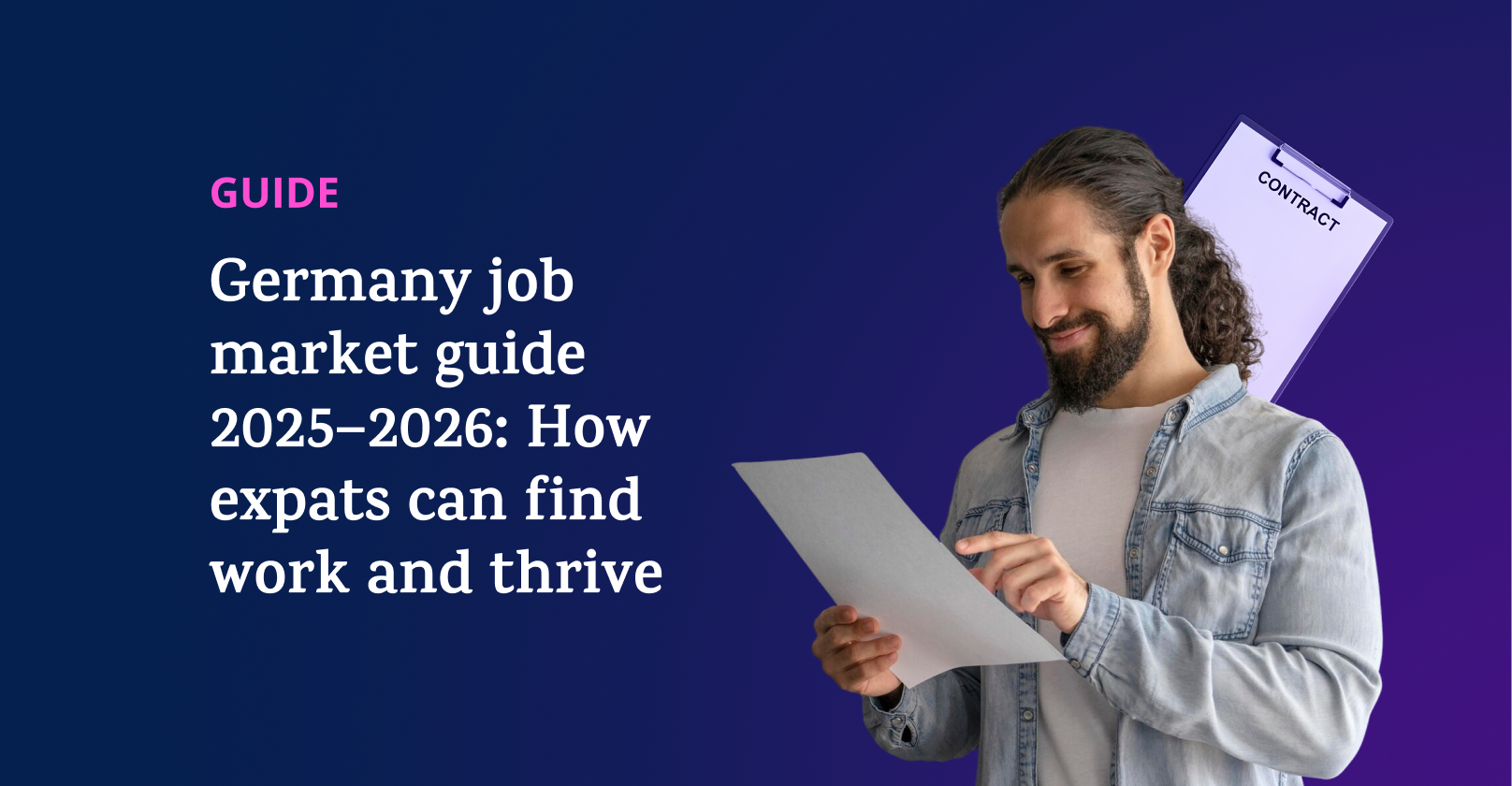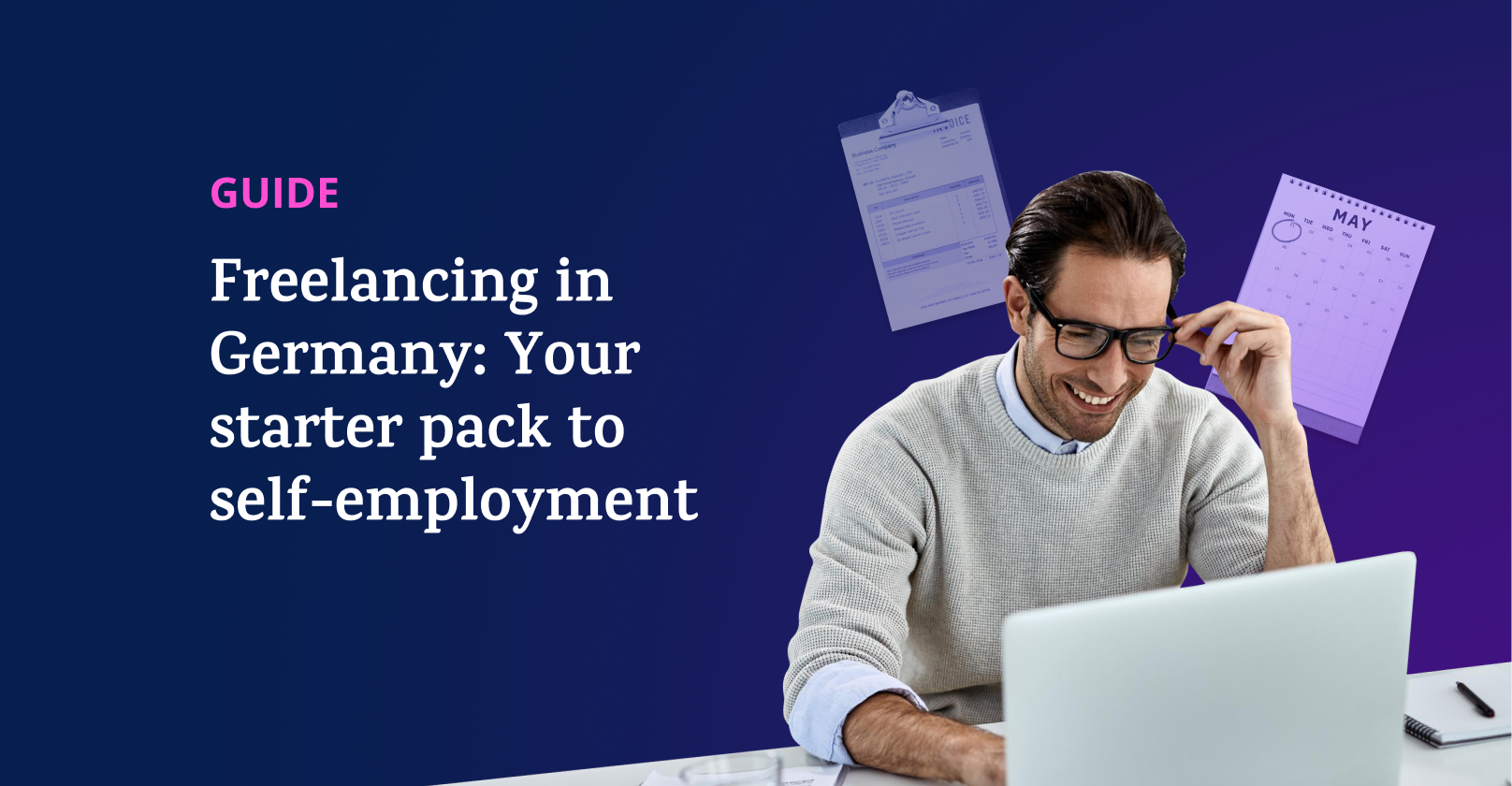Your guide to integration courses in Germany
Arriving in a new country can be exciting — and sometimes a little overwhelming. There’s so much to figure out: where to shop, how to register your address, how to talk to your neighbours or colleagues.

One of the best ways to feel at home faster is to learn German and understand how everyday life works here. That’s exactly what an integration course (Integrationskurs) is designed to do. It combines language learning with practical knowledge about life in Germany, so you can feel more confident from Day One.
In this guide, we’ll explain how the courses work, what types are available, and how to sign up.
- What is an integration course in Germany?
- How integration courses are structured
- Types of integration courses in Germany
- Why taking an integration course is worth it
- How to enroll in an integration course
- FAQs
What is an integration course in Germany?
An integration course is a government-funded program run by the Federal Office for Migration and Refugees (BAMF).
Its goal is simple: to help you settle in by building up your German skills and teaching you about the country’s culture, laws, and everyday life.
Who can join:
- Migrants and refugees with a residence permit
- EU citizens living in Germany
- Spouses joining German or EU citizens
- Other long-term residents who need better German skills
Completing the course often makes it easier to apply for permanent residency or citizenship later on.
How integration courses are structured
A standard integration course includes about 700 lessons:
- 600 lessons of German language instruction, from everyday conversations to official forms and job applications
- 100 lessons of civic and cultural orientation, to help you understand your rights, responsibilities, and German traditions
Orientation topics include:
- How democracy works in Germany
- Your rights and obligations as a resident
- German history, culture, and values
You can choose a format that fits your schedule: full-time, part-time, or evening classes. Many providers also offer online or hybrid learning options.
At the end of the course, you’ll take:
- Deutsch-Test für Zuwanderer (DTZ): a language test at A2–B1 level
- Leben in Deutschland test: a civic knowledge exam
Passing both earns you the Integration Course Certificate, which can open doors to your future in Germany.
Types of integration courses in Germany
General integration course
The standard choice for most newcomers. It combines German lessons with civic and cultural orientation.
Youth integration course
Designed for young adults aged 16–27, this course comprises up to 900 lessons and helps prepare participants for school, training, or entering the workforce in Germany.
Literacy course (Alphabetisierungskurs)
For learners who cannot read or write in any language or need to build basic literacy skills before learning German. These courses can last up to 1,300 lessons.
Comparison table: types of integration courses
| Course type | Target group | Duration (approx.) | Key advantage |
| General integration course | Most newcomers | ~700 lessons | Balanced program |
| Youth integration course | Ages 16–27 | Up to 900 lessons | Prepares for education/work |
| Literacy course | Literacy learners | Up to 1,300 lessons | Builds reading and language |
Why taking an integration course is worth it
- Feel more at home: You’ll gain the language skills you need for everyday situations — from chatting with neighbours to filling out forms.
- Understand the culture: Learn how things work in Germany, from public transport to civic responsibilities.
- Boost your career: B1-level German and cultural knowledge improve your job prospects.
- Residency and citizenship: The integration course certificate often fulfils language and civic knowledge requirements.
- Make connections: Meet other newcomers and share the journey of settling in.
Tip: If you can’t start an integration course right away, the Lingoda Launchpad offers a free way to keep learning German and prepare for everyday life in Germany.
How to enroll in an integration course
Getting started is easier than you might think:
- Find a provider: Use the official BAMF-NAvI tool to search for courses near you.
- Check if you qualify: Most newcomers do. Look at BAMF’s information sheets (Merkblatt) for details.
- Gather your documents: Typically, you’ll need your residence permit, proof of registration (Meldebescheinigung), and ID.
- Look into costs:
- Standard fee: about €2.29 per lesson (BAMF rates).
- Many participants qualify for subsidies or reimbursement, especially refugees or those with lower incomes.
- Pick a format that suits you: Courses are available full-time, part-time, in the evening, or even online.
Your path to belonging in Germany
An integration course isn’t just about grammar — it’s about finding your place in Germany.
Whether you’re new to the workforce, a parent, or a young student, there’s a course designed for you.
Early enrollment through BAMF-NAvI ensures you get a spot and start your journey toward feeling at home.
How long does an integration course in Germany take?
Most courses have 700 lessons (600 language + 100 orientation). Intensive options may be shorter.
Do I need an integration course for permanent residency?
Often yes — the integration course certificate helps meet language and civic-knowledge requirements.
How much does an integration course in Germany cost?
Some participants pay the standard fee (around €2.29 per lesson), while many qualify for subsidies or refunds.
Can I take an integration course online?
Yes, many providers offer online or hybrid classes.
What is the Deutsch-Test für Zuwanderer (DTZ)?
It’s the final language exam assessing German skills at A2–B1 levels, taken alongside the civic knowledge test.
We use AI tools to support idea generation and drafting. Every article is edited by our editorial team to ensure accuracy, clarity, and quality.













